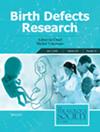Perspectives on Implementing Virtual Control Groups in Developmental and Reproductive Toxicity Studies
Abstract
The use of virtual control groups (VCGs) in nonclinical toxicology studies was first proposed in 2020 with the main purpose of reducing animal use while integrating historical control data (HCD) to enhance study interpretation. The use of VCGs has gained increasing attention as evidenced by an increasing number of publications that highlight implementation challenges. Laboratories that conduct harmonized studies with standardized procedures, consistent environmental conditions, and validated electronic databases are well-suited to implement VCGs in future nonclinical safety studies. We suggest that individual laboratories conducting rodent and rabbit developmental and reproductive toxicity studies should begin planning for VCG implementation. If possible, a harmonized approach to VCG implementation by multiple laboratories will lend credence to regulatory approval. We apply the six-step VCG implementation framework from Palazzi et al. to the routine GLP studies covered by international guidelines, which emphasize validation through retrospective and prospective trials. We discuss the risks and challenges to VCG implementation that have been previously presented. To address some of these concerns, a hybrid approach is proposed that combines a small concurrent control group (CCG) with multiple virtual control (VC) animals from the same test facility. The inclusion of a CCG addresses the need to monitor for disease and environmental changes and prevent depletion of HCD. Two approaches to the selection of VC animals are discussed. Given that developmental and reproductive toxicity studies use the most animals in nonclinical safety studies, we support the timely implementation of VCGs to significantly reduce these animal numbers.

 求助内容:
求助内容: 应助结果提醒方式:
应助结果提醒方式:


